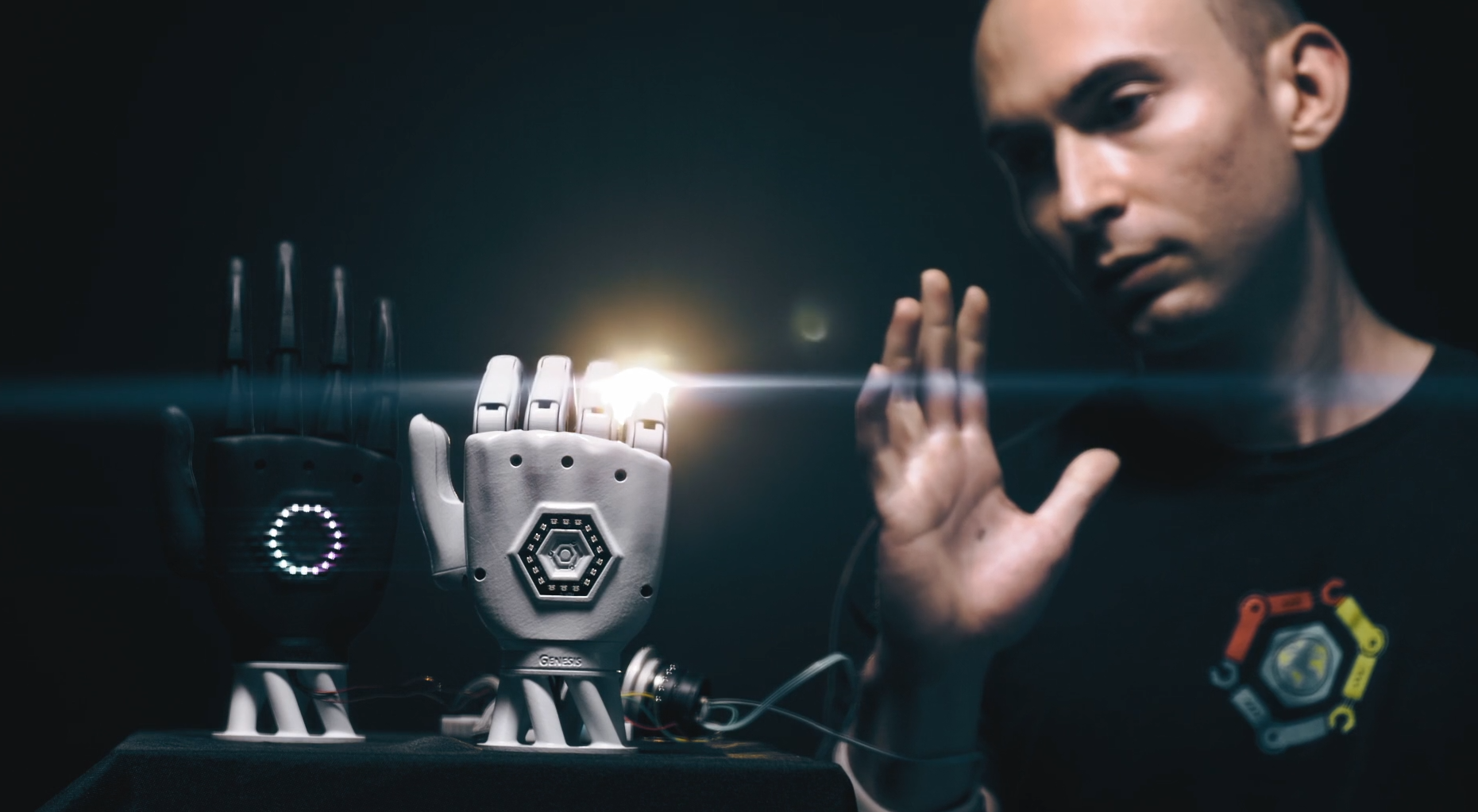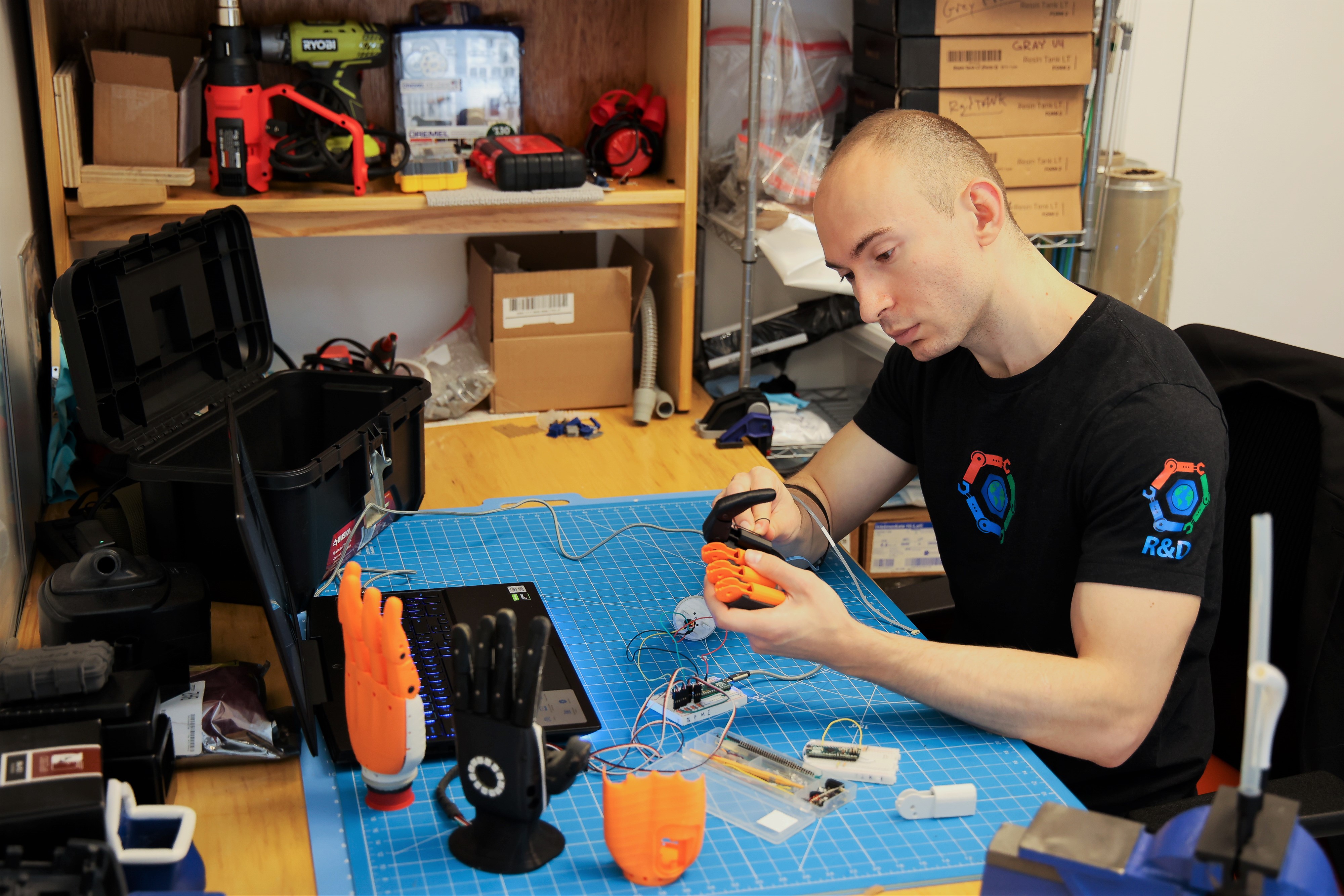Posted on May 29, 2024 by Sean M. Wood

Ryan Saavedra with his Bionic Hand
UTSA electrical engineering graduate Ryan Saavedra (’ 20) invented a mechanical finger for himself because he was (1) worried he wouldn’t be able to use the ring finger on his right hand and (2) bored.
An avid rock climber, Saavedra tore the sheath connecting the tendon to the bone when he caught himself falling. It was his sophomore year at the Margie and Bill Klesse College of Engineering and Integrated Design.
“So, I built a small mechanical finger using a Ziploc bag box, some yarn, tape, and some spare parts I had lying around,” he said. “I made that finger, so I made three more and a thumb and turned it into a hand.”
Now, he is the CEO of Alt-Bionics, a company that is close to securing more than $1 million in seed capital so it can scale up to make bionic hands for the humanoid robot industry. It is currently in clinical trials with the FDA so its Genesis prosthetic hand can be used by amputees. It costs $5,000—one-third of what its nearest competitor charges.
“I have always wanted to do something good with my degree,” Saavedra said. “I imagined we could have a better, more inclusive future through technology. But I never thought to achieve my ambition so quickly.”
The Genesis prototype was a senior capstone project he and three classmates created for the Klesse College of Engineering and Integrated Design Tech Symposium. Their bionic hand took second place in the competition but garnered the most media attention. His team’s AI-enhanced prosthetic hand, based on an open-source design, cost a mere $600.

Saavedra used his share of the team’s $3,000 prize to buy the hand and began researching how to build a company. He joined an incubator in Virginia and put together a team that included two mechanical engineers and a chief financial officer. Along the way, he’s secured capital from angel investors and cash prizes for empathy in innovation.
Securing $1.15 million in seed capital is a significant milestone for Alt-Bionic. This influx of funds will enable the company to ramp up production and make its mark in the $500 billion humanoid robotics market. It’s a testament to the investors’ belief in Alt-Bionic’s potential and a promising sign of the company’s future growth.
“Just like automotive companies don’t make the tires that go on their vehicles, some robotics companies don’t make the hands that go on their robots,” Saavedra said.
They are contending for a contract with a major robot manufacturer. Saavedra said the company would need between 10,000 and 20,000 robotic hands a year, which would mean $162 million in recurring revenue. Alt-Bionic can make 2,000 a year.
“That contract could help us with research and development, to make our design more robust, to make our hands waterproof, and to bring the cost down,” Saavedra said. “We have 1.3 million followers on social media. Some have been following us for years. We want them to know that it’s finally here. The future that we’ve been working for is here.”

